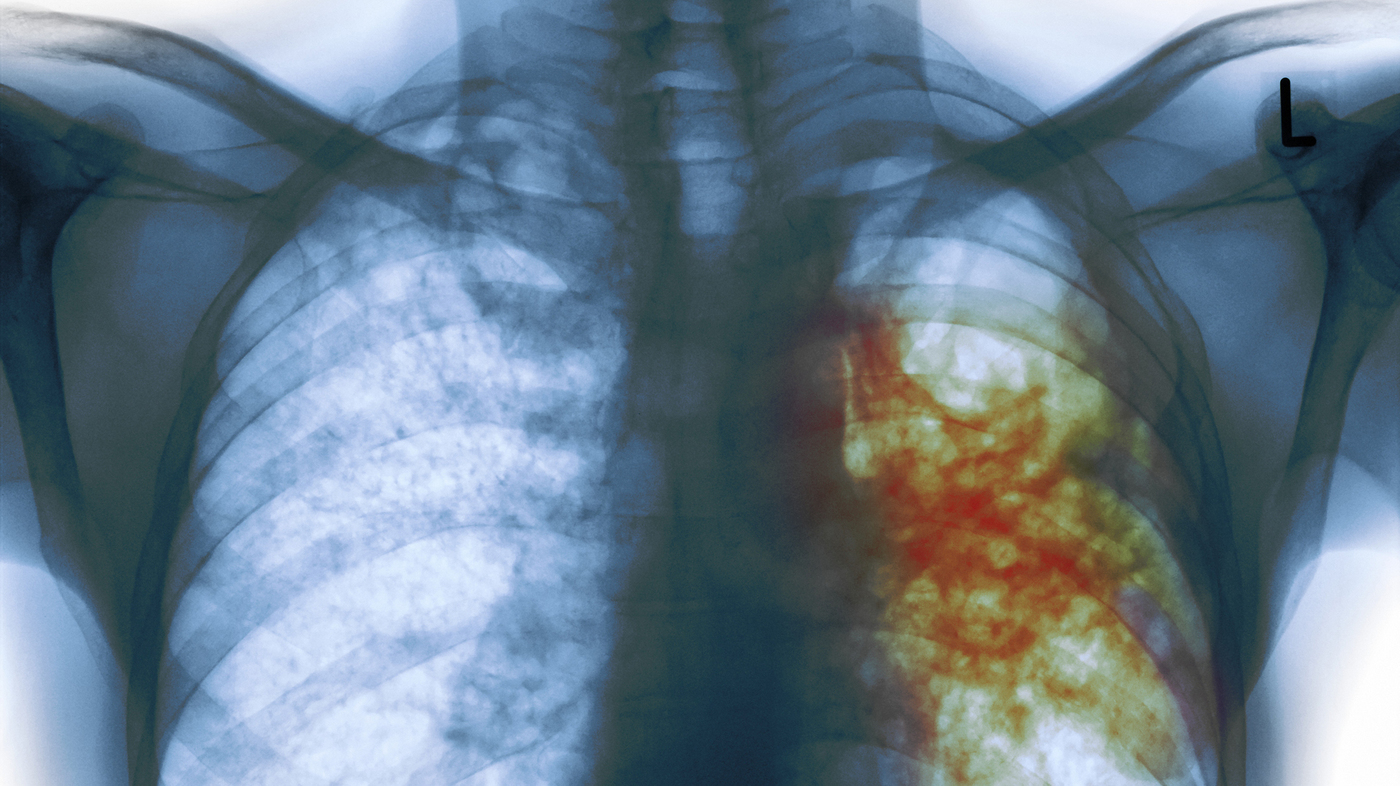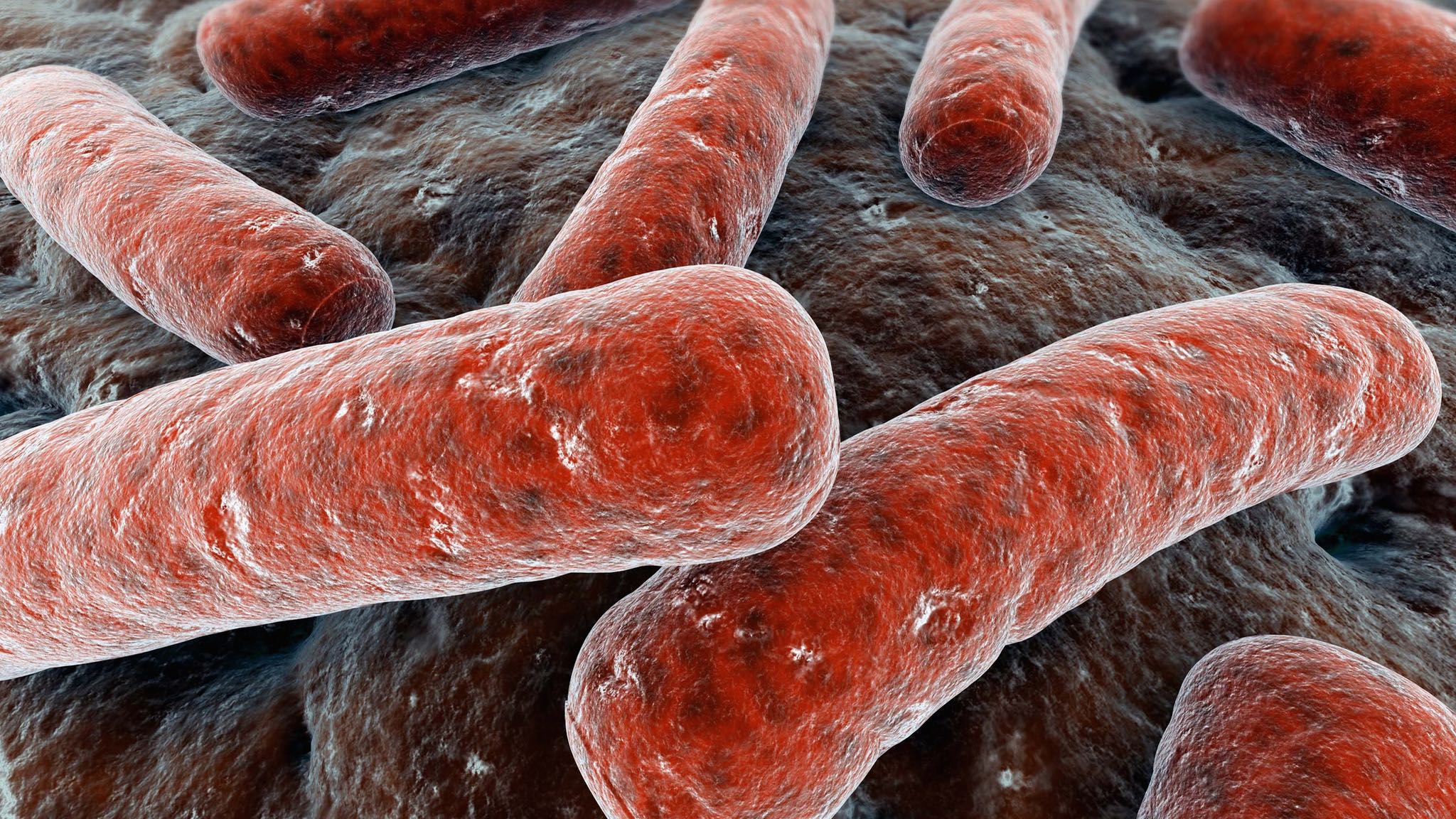TB is an infectious disease that usually affects the lungs. It is the second greatest killer due to a single infectious agent worldwide, and in 2012, 1.3 million people died from the disease, with 8.6 million falling ill. TB usually affects the lungs, although it can spread to other organs around the body. Doctors make a distinction between two kinds of tuberculosis infection: latent and active. In latent TB, the TB bacteria remain in the body in an inactive state. They cause no symptoms and are not contagious, but they can become active. In active TB, the bacteria do cause symptoms and can be transmitted to others.
About one-third of the world's population is believed to have latent TB. There is a 10% chance of latent TB becoming active TB, but this risk is much higher in people who have compromised immune systems i.e. people living with HIV or malnutrition, or people who smoke.TB affects all age groups and all parts of the world. However, the disease mostly affects young adults, and people living in developing countries. In 2012, 80% of reported TB cases occurred in just 22 countries.
What causes tuberculosis?
The Mycobacterium tuberculosis bacterium causes TB. It is spread through the air when a person with TB (whose lungs are affected) coughs, sneezes, spits, laughs or talks. TB is contagious, but it is not easy to catch. The chances of catching TB from someone you live or work with are much higher than from a stranger. Most people with active TB who have received appropriate treatment for at least two weeks are no longer contagious.
Since antibiotics began to be used to fight TB, some strains have become resistant to drugs. Multidrug-resistant TB (MDR-TB) arises when an antibiotic fails to kill all of the bacteria that it targets, with the surviving bacteria developing resistance to that antibiotic and often others at the same time. MDR-TB is treatable and curable only with the use of very specific anti-TB drugs, which are often limited or not readily available. In 2012, around 450,000 people developed MDR-TB.
Who is at risk?
People with compromised immune systems are most at risk of developing active tuberculosis. HIV suppresses the immune system, making it harder for the body to control TB bacteria. People who are infected with both HIV and TB are around 20-30% more likely to develop active TB than those who do not have HIV. Tobacco use has also been found to increase the risk of developing active TB. Over 20% of TB cases worldwide are related to smoking.

Symptoms of tuberculosis
While latent TB is symptomless, the symptoms of active TB include the following:
- Coughing, sometimes with mucus or blood
- Chills
- Fatigue
- Fever
- Loss of weight
- Loss of appetite
- Night sweats.
Tuberculosis usually affects the lungs, but can also affect other parts of the body. When TB occurs outside of the lungs, the symptoms can vary accordingly. Without treatment, TB can spread to other parts of the body through the bloodstream:
- TB infecting the bones can lead to spinal pain and joint destruction
- TB infecting the brain can cause meningitis
- TB infecting the liver and kidneys can impair their waste filtration functions and lead to blood in the urine
- TB infecting the heart can impair the heart's ability to pump blood, resulting in a condition called cardiac tamponade that can be fatal.
Tuberculosis: Treatments and Prevention
Diagnosis of tuberculosis
- To check for TB, a health care provider will use a stethoscope to listen to the lungs and will check for swelling in the lymph nodes. They will also ask about symptoms and medical history as well as assessing a person's risk of exposure to TB.
- The most common diagnostic test for TB is a skin test where a small injection of PPD tuberculin, an extract of the TB bacterium, is made just below the inside forearm.
- The injection site should be checked after 2-3 days, and if a hard, red bump has swollen up then it is likely that TB is present.
- Woman having injection
- TB is most commonly diagnosed via a skin test involving an injection into the forearm.
- Unfortunately, the skin test is not 100% accurate and has been known to give incorrect positive and negative readings.
- However, there are other tests that are available to diagnose TB. Blood tests, chest X-rays and sputum tests can all be used to test for the presence of TB bacteria, and may be used alongside a skin test.
- MDR-TB is more difficult to diagnose than regular TB. It is also difficult to diagnose regular TB in children.
Treatments for tuberculosis
The majority of TB cases can be cured when the right medication is available and administered correctly. The precise type and length of antibiotic treatment depends on a person's age, overall health, potential resistance to drugs, whether the TB is latent or active, and the location of infection (i.e. the lungs, brain, kidneys). People with latent TB may need just one kind of TB antibiotics, whereas people with active TB (particularly MDR-TB) will often require a prescription of multiple drugs. Antibiotics are usually required to be taken for a relatively long time. The standard length of time for a course of TB antibiotics is about 6 months.
All TB medication is toxic to the liver, and although side effects are uncommon, when they do occur, they can be quite serious. Potential side effects should be reported to a health care provider and include:
- Dark urine
- Fever
- Jaundice
- Loss of appetite
- Nausea and vomiting.

It is important for any course of treatment to be completed fully, even if the TB symptoms have gone away. Any bacteria that have survived the treatment could become resistant to the medication that has been prescribed, and could lead to developing MDR-TB in the future. Directly observed therapy (DOT) can be recommended. It involves a health care worker administering the TB medication to ensure that the course of treatment is completed.
Prevention of tuberculosis11Face mask If you have active TB, a face mask can help lower the risk of the disease spreading to other people. A few general measures can be taken to prevent the spread of active TB. Avoiding other people by not going to school or work, or sleeping in the same room as someone, will help to minimize the risk of germs from reaching anyone else. Wearing a mask, covering the mouth and ventilating rooms can also limit the spread of bacteria.
In some countries, BCG injections are given to children in order to vaccinate them against tuberculosis. It is not recommended for general use in the US because it is not effective in adults, and it can adversely influence the results of skin testing diagnoses. The most important thing to do is to finish entire courses of medication when they are prescribed. MDR-TB bacteria are far deadlier than regular TB bacteria. Some cases of MDR-TB require extensive courses of chemotherapy, which can be expensive and cause severe adverse drug reactions in patients








